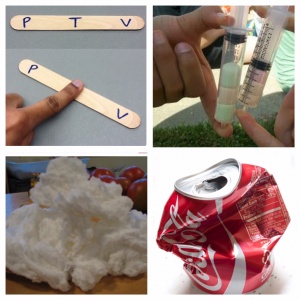Chemistry I students last discussed the states of matter in sixth grade, but they are also used as a discussion lead in to thermodynamics in chemistry. Because students have experience with states of matter, I wanted to find an engaging way to activate previous knowledge and begin our thermochemistry unit. I generated a list of eight properties of each of the three common states of matter, printed them on colored sheets of paper, cut them into slips and mixed them together in a bucket. Then I divided the class into three teams and assigned each team a state of matter to represent and asked them to pull eight random slips from the bucket. The teams were to discuss amongst themselves whether or not each of the eight slips they pulled out matched their state of matter. If the group found that some of the slips descriptions didn’t define their state, they were to trade with another group until they found descriptions that did, but not to have more than eight slips at once.
Continue reading States of Matter Sort →
